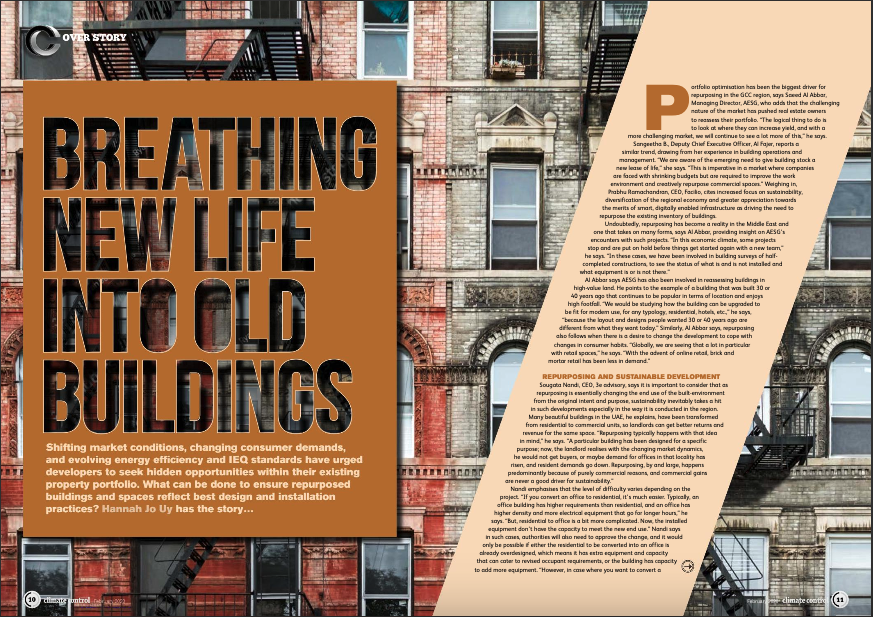Repurposing buildings for sustainability's sake
Repurposing old buildings appropriately is a means to reduce waste of building materials and improve environmental sustainability, says Prof Gerhard Schmitt in Climate Control Middle East.

With changing market conditions, consumer demands, and energy efficiency and IEQ standards, developers are increasingly repurposing buildings and spaces to give them a second lease of life. In the article external page Breathing new life into old buidings in external page Climate Control Middle East. Prof. Gerhard Schmitt, professor of Information Architecture at ETH Zurich and principal investigator of Cooling Singapore, explains the positive impact of repurposed buildings on sustainability.
There are many examples of medieval architecture that is still in use today with new purpose, says Prof. Schmitt. In Singapore, Dempsey Hill stands for a recent example of repurposing large military barracks into attractive dining and shopping ensembles. In the last century, unused but spacious production facilities, often in inner cities, have been turned into attractive lofts.
Reusing the structural and most of the exterior materials of existing buildings reduces the need to produce new building materials. "The construction materials are already on-site, which will lead to a reduction of embodied carbon associated with building materials,” says Prof. Schmitt. However, repurposing, by and large, happens predominantly because of purely commercial reasons, and commercial gains are never a good driver for sustainability, says Sougata Nandi, CEO of 3e advisory.
To ensure that buildings are not only repurposed, but repurposed well, it would be useful to compare how much CO2 would have been set free by the processes of demolishing the existing structure, transporting and processing the demolition materials, preparing the site for the new structure, and constructing a new building.
Prof. Schmitt says that stakeholders must also consider if extensive changes to the original primary structure are necessary to facilitate the new use. “This is directly related to the flexibility of the existing structure and its quality potential for reuse,” he says. “Stable and spatially generous primary structures are better suited for repurposing than complex buildings constructed in heavy materials, for which the removal of each wall requires a sequence of follow-up actions to guarantee structural safety.” He also points out that buildings that do not come close to the latest standards in fire safety and earthquake resistance are less attractive to repurpose.
From a planning point of view, repurposing would require the city to change the zoning law or landuse pattern. The trend towards high-density mixed-use neighborhoods is both a result and a precondition for repurposing existing structures.